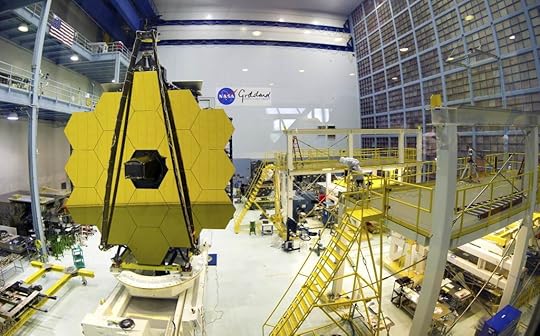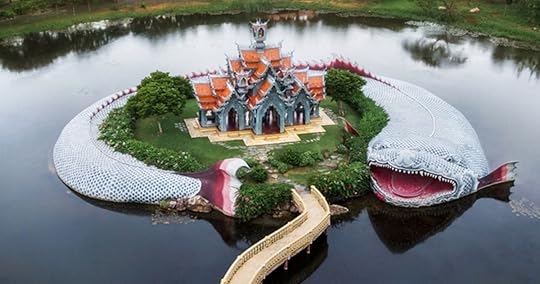Ripley Entertainment Inc.'s Blog, page 105
January 27, 2022
South Africa’s Most Valuable Pachyderm: Huberta the Hippo
Featured in Ripley's Believe It or Not!

During the Great Depression, a hippopotamus in South Africa decided she wanted to see more than her microcosmic watering hole. She began what would become a two-and-a-half-year journey of over 1,000 miles. Her trip became so popular that sightings of her made headlines around the world.
Huberta – initially named Billy, followed by Hubert before her sex was determined – wound up having many adventures during her trek, making her an unexpected, international celebrity and South Africa’s “national pet.” She successfully avoided capture while traipsing through golf courses, gardens, and other areas of the countryside. Since hippopotamuses typically roam after dark, she had the ability to travel in stealth. While the press and her fans tried to catch her in action, they often only saw the footprints she left behind, according to Mahlatini Luxury Travel.
It’s unclear what motivated Huberta the hippo to leave her home at the St. Lucia Estuary in KwaZulu-Natal in 1928, but according to South African website Getaway, people believed that she was either looking for a male companion or she ran off after her mother died at their watering hole. Another more romantic theory was that she was seeking the home of her ancestors.
S0me information regarding her journey is a bit vague as she so skillfully avoided humans. Still, the South African-based Natal Mercury newspaper got its hands on a photo early on during her adventure, and its publication sparked intense interest from people around the world. It was a positive news story to follow during the late 1920s, which was a challenging time economically for many people all over the world.
At one point, Huberta spent time hanging out in a lagoon at the Mhlanga River, which was about 125 miles from her home base. Some locals treated her as royalty, dishing out snacks to feed her traveling soul, while others were not so kind to Huberta. In true paparazzi fashion, they threw stones and sticks near her lodging to coax her out of hiding places, all for a look at the famous hippo. Hunters even tried to capture and relocate her to the Johannesburg Zoo, but they didn’t succeed.
Huberta was greatly admired by many people. The Zulus believed she embodied the spirit of the Great King Shaka, according to Wild Coast Holidays, while the Mpondo reportedly believed she was a reincarnation of a famous doctor. Some Hindus considered her a “protector of the poor,” while some Xhosa believed Huberta was the spirit of a great chief. Due to her celebrity status, the Natal Provincial Council, a governing group in South Africa, eventually categorized her as “royal game,” prohibiting hunters from catching or killing her.
Over the course of her travels, people witnessed her swimming on the coast of Durban and even exploring the city’s main street. She also surprised guests at the Beachwood Golf Course, the Durban Country Club, and she even startled a train conductor by lazily hanging out on the tracks.
By March 1931, Huberta had traversed approximately 122 rivers and settled in the Eastern Cape in the Keiskamma River. Unfortunately, her life came to a tragic end when she was killed by a group of hunters. Though they claimed they didn’t know who she was, they were fined for their actions, and people around the world were devastated by Huberta’s death. South Africans mourned her passing by writing sympathy cards and making donations in her name. Some even wrote poetry in her honor.
A London taxidermist preserved her body, and her final resting place is a museum in South Africa where thousands of people gathered to pay tribute to her. You can still see Huberta today in the Amathole Museum in King William’s Town.
By Noelle Talmon, contributor for Ripleys.com
EXPLORE THE ODD IN PERSON! Discover hundreds of strange and unusual artifacts and get hands-on with unbelievable interactives when you visit a Ripley’s Odditorium!Source: South Africa’s Most Valuable Pachyderm: Huberta the Hippo
CARTOON 01-27-2022
January 26, 2022
Teenager Zara Rutherford Becomes Youngest Woman To Fly Solo Around The World
Featured in Ripley's Believe It or Not!

When it comes to smashing aviation records, most people think of the Wright Brothers, Charles Lindbergh, and Chuck Yaeger. We also assume there are no records left to be broken, but that’s where 19-year-old Zara Rutherford challenges the status quo.
The British-Belgian pilot recently circumnavigated the globe, completing a 32,320-mile trip and winning a place in the record books for being 1) the youngest woman to achieve such a journey and 2) the first female to fly around the world in a microlight aircraft.
Here’s what you need to know about her incredible journey and how it contributes to the history of aviation.
Making Aviation HistoryEver since Charles Lindbergh made his famed Transatlantic crossing, daredevil pilots have fascinated the public. Although Robert Ripley rightly pointed out that Lindbergh, rather than being the first to cross the Atlantic, was the 67th person to do so, no one can deny the pilot’s ability to capture national attention. He sparked a keen interest in airplane adventure and discovery that remains today.

Robert Ripley incited the masses with this “technically true” toon.
Following in Lindbergh’s footsteps would come many equally ambitious pilots, including female contributors to flight. One of our favorites remains Kathy Sullivan. A former NASA Space Shuttle astronaut, her spacewalk in 1984 was the first by an American woman. She also holds a world record for the deepest dive in maritime history, to the bottom of the Mariana Trench on a visit to Challenger Deep.
Taking her place among these incredible heroes is now Rutherford, who isn’t even old enough to rent a car. How did her ambitious air conquest unfold? She says she initially estimated it would take three months to circle the globe in her customized Shark ultralight aircraft. But after departure on August 18, she encountered many unforeseen circumstances leading to delays. These included everything from dangerous weather to visa issues and complications related to ever-changing COVID-19 pandemic protocols worldwide.
Embed from Getty Imageswindow.gie=window.gie||function(c){(gie.q=gie.q||[]).push(c)};gie(function(){gie.widgets.load({id:'nB7xkbbAT1tWPp2NuwWz4Q',sig:'3Kryryrvte01vCh5RDiUEy143JRtuECVdW4NJrOGLGg=',w:'594px',h:'396px',items:'1365840575',caption: true ,tld:'com',is360: false })});
Breaking Two World Records Is a Hard BusinessOne of the most challenging parts of Rutherford’s journey would be going solo. After all, she had only herself to rely on, including if anything went wrong. What’s more, those problems we mentioned earlier set her schedule back by eight weeks. Yet, she doesn’t hesitate when asked about the most treacherous part of her trip: flying alone over Siberia.
Navigating the skies over Northern Russia meant temperatures of -35 degrees Fahrenheit on the ground. In other words, had her plane engine stalled forcing a landing, things would’ve gotten very cold, very quickly, and she would not have been able to start her plane up again. As she told CNN, “I don’t know how long I could have survived.” Fortunately, things went smoothly, and she never found out firsthand.
#FromRussiawithlove! Zara is in #Magadan #Russia after 6H25 flight over the #Siberian #tundra! What a relief for Zara & the whole team: if she were to land in these extreme temperatures, she could not have taken off again. ✈🥶❄️. To all flight and weather advisors:
! pic.twitter.com/8bW7wDWu9h
— FlyZolo (@fly_zolo) November 2, 2021
All told, the teen passed through a total of 41 countries on her aerial adventure, becoming the first Belgian national to fly the planet’s circumference alone. With so many accolades to her name, what plans does Rutherford have for the future? In the fall, she’ll head to college in pursuit of a degree in computer engineering. She also hopes to continue bringing visibility to female aviators, and we say she couldn’t have a better start when it comes to that!
By Engrid Barnett, contributor for Ripleys.com
EXPLORE THE ODD IN PERSON! Discover hundreds of strange and unusual artifacts and get hands-on with unbelievable interactives when you visit a Ripley’s Odditorium!Source: Teenager Zara Rutherford Becomes Youngest Woman To Fly Solo Around The World
CARTOON 01-26-2022
January 25, 2022
CARTOON 01-25-2022
January 24, 2022
James Webb Space Telescope Reaches Final Destination
Featured in Ripley's Believe It or Not!

Today — January 24, 2022 — the James Webb Space Telescope, also called JWST or Webb, reaches its final destination. Known as the second Lagrange point or L2, this location is where JWST will orbit the sun approximately 1 million miles from Earth and use its powerful mirror gaze closer than ever before at the beginning of time and unravel the mysteries of the universe. If your interest is piqued, you’re in luck! The impressively large space-based observatory has plenty of room on board for some interstellar info.
Keep reading to learn about the most powerful telescope ever sent into space — the result of a combined effort between NASA and the European and Canadian space agencies and more than 20 years of planning and development.
It was named after former NASA administrator James E. WebbThe second administrator of the National Aeronautics and Space Administration, James Edwin Webb, had a long career in public service and served in the U.S. Marine Corps during World War II.
Though some people only think of the Apollo program and the surrounding race to the moon when they think of James Webb, many in the scientific community credit him for protecting the agency’s scientific endeavors during a highly political and policy-driven time.
This sentiment was reinforced with the naming of the telescope. Former NASA Administrator Sean O’Keefe said, “It is fitting that Hubble’s successor be named in honor of James Webb. Thanks to his efforts, we got our first glimpses at the dramatic landscape of outer space.” The space science program that James Webb started resulted in more than 75 launches.
The telescope is even bigger than the rocket that launched it into space
“Folded up like origami.” Credit: NASA/Chris Gunn
Cue up your Doctor Who bigger-on-the-inside jokes, because JWST really is! In order to send it to space, it had to fit inside the launch shroud of a rocket. According to JWST Public Affairs Officer Lynn Chandler, the telescope “had to be folded up like origami.”
Chandler also pointed out that it’s as tall as a 3.5-story building, or roughly half the size of a 737 airplane. In comparison, the Hubble Space Telescope is about the size of a semitruck.
Once launched, the telescope then assembled itself in spaceYou may be wondering what the next step was for the largest and most complex space science telescope after launching. The answer? It unfolded, as Chandler put it, “like a Transformer.” The process of unfolding in space took two weeks after the launch.
“The successful completion of all of the Webb Space Telescope’s deployments is historic,” said Gregory L. Robinson, Webb program director at NASA Headquarters. “This is the first time a NASA-led mission has ever attempted to complete a complex sequence to unfold an observatory in space — a remarkable feat for our team, NASA, and the world.”
The golden honeycomb-shaped features are actually mirrors
Hexagon mirrors. Credit: NASA/Francis Reddy (Syneren Technologies)
There was plenty of buzz about what the striking 18 hexagonal mirror segments are and what they do when artist renderings and photos came out. By using hexagons, the mirror can take on a somewhat circular shape overall.
The hexagon shape allows the segments of the mirrors to fit together without creating gaps, which allows for better light focusing and more accurate photos.
The mirrors are what allow Webb to collect information, and the bigger the better. In fact, Webb’s mirrors in total are almost seven times larger than the mirror on the Hubble Telescope.
The telescope will try to unravel the mysteries of the universeOne of the mission goals is to observe the formation of stars from the first stages to the formation of planetary systems. Webb will allow scientists to look closer than ever before at the history of the universe.
With the technology involved, scientists will be able to see what the universe was like nearly 200 million years after the Big Bang. According to Chandler, “The telescope will be able to capture images of some of the first galaxies ever formed.”
On top of that, scientists will also use JWST to peer into dust clouds to watch the birth of new stars and planets. Additionally, Webb will image our own solar system, including things outside the orbit of Mars, satellites, comets, asteroids, and Kuiper belt objects.
It can investigate the potential for life in spaceWebb can measure the physical and chemical properties of planetary systems (including our own) to investigate the potential for life, according to Chandler. It will also be able to tell us about the atmospheres of extrasolar planets. How can an infrared telescope do that? Webb will use a method called the transit method, which looks for the dimming of light from a star that happens when its planet passes between the star and us.
The telescope will also be able to take images of exoplanets that are near bright stars. While that result will come back as just a dot with a color, it will be able to show us the planet’s vegetation, seasons, and more through spectroscopy (the science of measuring wavelengths of light).
It basically has an SPF of 1 million
The five-layer sunshield. Credit: NASA/Chris Gunn
Because it will orbit almost 1 million miles from Earth, the telescope needs some serious sun protection! That’s why it has a five-layer sunshield that measures a whopping 69.5 by 46.5 feet.
The shield protects Webb from light from the sun, the Earth, and the moon that could all interfere with its infrared light observations and imaging. The sunshield also helps keep everything cool.
According to NASA’s website, you could almost boil water on one side of the sunshield because it gets so hot and distributes that heat into space, but the other side of the shield is cold enough to freeze nitrogen.
If something goes wrong, it can’t be servicedBut that’s normal! Only Hubble can be serviced because it’s relatively close to Earth at 375 miles away, compared to Webb’s million-mile voyage. At that distance, it would be impractical, incredibly complex, and costly to try to service or retrieve it if something happened. Though, seeing as how it has even been designed to survive micrometeoroid impacts, the chances of that are low.
Although we can’t physically reach the telescope, its place in space is always known — even to civilians. NASA has a “Where is Webb?” tracker on its website. It’s incredible to be able to witness any major space endeavors, but it’s special to be able to check in with its location whenever you want.
The first images will be “ugly”Now that the James Webb Space Telescope is in position, we should start seeing some mind-boggling pictures of galaxies far, far, away now, right? Not quite. Though the major deployment steps are complete, the telescope’s mirrors will undergo months more of alignment and calibration.
According to Jane Rigby, Webb operations project scientist, “The first images are going to be ugly. It is going to be blurry.” Scientists will use those images to fine tune the telescope, basically putting the camera’s subjects into focus. It’s estimated that the first clear images from JWST will debut in May or June of this year.
By Kelsey Roslin, contributor for Ripleys.com
EXPLORE THE ODD IN PERSON! Discover hundreds of strange and unusual artifacts and get hands-on with unbelievable interactives when you visit a Ripley’s Odditorium!Source: James Webb Space Telescope Reaches Final Destination
CARTOON 01-24-2022
January 23, 2022
CARTOON 01-23-2022
January 22, 2022
CARTOON 01-22-2022
January 21, 2022
All About Muang Boran, The World’s Largest Open-Air Museum
Featured in Ripley's Believe It or Not!

The world’s largest outdoor museum occupies 300 acres just outside Bangkok — and in case you’re wondering, that’s about 227 football fields put together! The grounds of this location, Muang Boran, are shaped like the map of Thailand and feature 116 life-size replicas and scaled-down models of some of Asia’s most impressive monuments.
Muang Boran, or Ancient City, is the love child of eccentric millionaire businessman Lek Viriyaphan, who also funded the construction of Bangkok’s Erawan Museum (famous for the 250-ton three-headed elephant statue that can be seen from miles away) and Pattaya’s Sanctuary of Truth, a 100-meter-tall, all-wood building that’s part temple, part art gallery, and all-around weird.

Bangkok’s Erawan Museum By Ddalbiez – Own work, CC BY-SA 3.0
When Viriyaphan bought land in the Samut Prakan area outside Bangkok back in 1963, his original plan was to build a huge golf course and have replicas of famous Thai landmarks as part of the decoration and design of the club. He apparently got a little carried away in the process and somehow ended up building an entire attraction park filled with historic sites instead.
With the help of experts from the National Museum, plus muralists and architecture students, Viriyaphan then set out to recreate some of the most famous buildings in Thailand. He even made sure the grounds of Muang Boran were divided into four regions so the buildings could sit exactly where you would geographically find them in real life if you were to travel to those regions.
Essentially, you get a chance to see all of Thailand’s most impressive landmarks in one place when you visit Muang Boran — that is, if you’re willing to ride a bike or drive a golf cart through the park, as the grounds are simply too big to be explored in one day.
The Lay of the LandSome of the park’s most impressive structures include the Dusit Maha Prasat Palace: the original 1806 design of the audience hall built by King Rama I inside Bangkok’s royal palace, the Grand Hall of Wat Maha That: a 1:4 scale of the original giant temple ruins found in the ancient city of Sukhothai, and the Pavilion of the Enlightened: a stunning green and gold floating temple where, the story goes, 500 monks from different cultural and spiritual backgrounds all became enlightened and attained Nirvana.

Pavilion of the Enlightened in Bangkok, Thailand
The park is also home to many wonderful examples of ruins from the old Khmer Empire which, for many centuries, ruled over parts of Thailand, Vietnam, Cambodia, and Laos. The Khmer Empire is most famous for having built the 12th-century Angkor Wat in Cambodia, a UNESCO World Heritage Site and the world’s largest religious structure.

Sanphet Prasat Palace, Ancient City, Bangkok, Thailand
While Angkor Wat itself is not represented here, you can see similar examples of architecture in the recreation of Ayutthaya’s Sanphet Prasat Palace. Since the original palace was destroyed in the 1700s when the Burmese burned down Ayutthaya, this is your only chance to ever see its splendor in person.
Perhaps one of the most stunning buildings to visit here, however, is the scaled-down version of Preah Vihear, a ninth–century temple built right on the border between Thailand and Cambodia and dedicated to Lord Shiva.
Technically speaking, the temple right now sits on the Cambodian side, though Thailand has long disputed the location of the border and even fired some warning shots into their neighbors’ land in 2009 and 2011 after very heated skirmishes over it. The real temple is now closed to the public to avoid further disagreements.
Want more? The grounds of the park also feature plenty of pavilions, stupas, lakes, and islands reached via grand bridges and platforms. There’s even a floating market, where traditional long-tail boats take visitors through klongs (narrow canals) to pick up souvenirs, take photos, and see up close what old wooden shophouses once looked like.
Step Out Of The Box And Into Extraordinary DestinationsHaven’t had your world-traveler fix? Find more astonishing locations like Muang Boran inside the pages of Ripley’s newest book, Ripley’s Believe It or Not! Out of the Box, on sale now on Amazon and most major retailers.
By Diana Bocco, contributor for Ripleys.com
STEP OUTSIDE OF YOUR COMFORT ZONE Experience the stories of adventurers near and far, from a three-year-old mountain climber to hair-hangers and acrobats. Leave inspired by unbelievable talents, breathtaking bucket list-worthy locations, and curious discoveries, all from people just like you as you uncover the pages of Ripley’s newest annual book!Source: All About Muang Boran, The World’s Largest Open-Air Museum
Ripley Entertainment Inc.'s Blog
- Ripley Entertainment Inc.'s profile
- 52 followers









